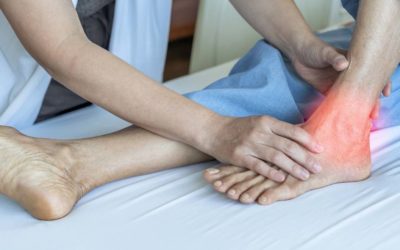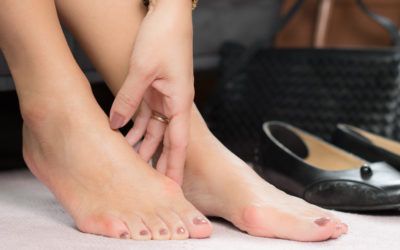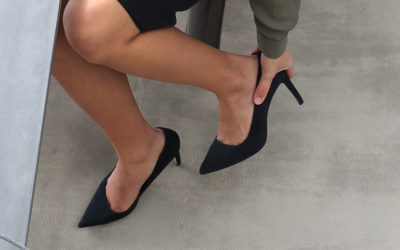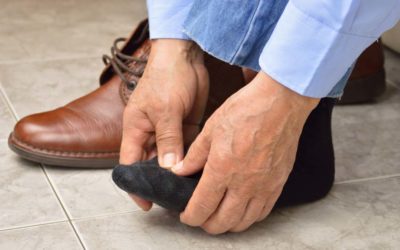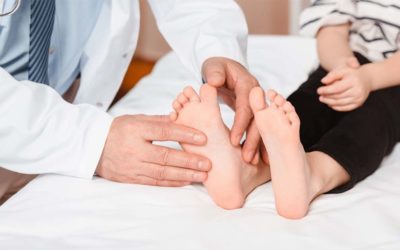Wound Debridement for Diabetes
If you’re living with diabetes, you may be prone to foot problems—including frequent wounds. Getting immediate care for this issue is crucial to preventing or stopping infection and other serious complications, including limb loss.
At Evanston Regional Hospital, we offer a full range of treatments to help you heal. The board-certified podiatrist specializes in surgical debridement, an outpatient procedure to remove unhealthy tissue from foot wounds and promote a fast recovery.
About Diabetic Foot Wounds
People with diabetes are more susceptible to developing sores on the bottom of their feet, including non-healing wounds which may lead to ulcers. Ulcers form due to a combination of factors, such as poor circulation, high blood sugar (hyperglycemia) or ill-fitting shoes, as well as lifestyle factors like alcohol and tobacco use.
Symptoms may go unnoticed until the ulcer has become infected, because many diabetics have lost the ability to feel pain in their feet due to nerve damage (neuropathy). One of the first signs you may see is drainage on your socks, as well as swelling, red or black discoloration and odors.
If you spot any of these signs, it’s important to get treatment right away. The faster the wound heals, the less chance for infection or related problems.
Surgical Care to Speed Healing
Dr. Brady will assess the severity of your wound or infection, and work with you to develop a personalized treatment plan. Non-invasive options may include antibiotics or topical treatments, or special footwear that reduces pressure to the area with the ulcer.
If the wound does not respond, he may recommend surgical intervention, the gold standard treatment for severe diabetic foot infections. The procedure cleans out any dead or infected tissue, helping stop the growth of bacteria and making it easier for the body to develop healthy new tissue.
As needed, we also collaborate with members of the limb preservation program to help reduce the risk of amputation.
Recovery & Follow-Up Care
We usually perform wound debridement on an outpatient basis, so you can go home the same day as surgery. Dr. Brady will closely monitor your healing.
Appointments and referrals
Call 307-789-9355
Related Services and Conditions
Foot and Ankle Surgery
At Evanston Regional Hospital, we understand how debilitating a foot or ankle problem can be. Whether the condition is chronic or acute, if your mobility is compromised because of pain, you should find out what kind of relief is available through a Podiatrist....
Ankle and Foot Trauma
When hiking in the summer, stepping off the porch, or walking over ice, a wrong step can unfortunately, quickly turn into a broken ankle or foot. Trauma like this to the bones, tendons and ligaments can result in pain and inflammation as well as difficulty walking and...
Ankle Fusion
If you have degenerative arthritis in your ankle, normally as a result of an ankle fracture, or a severe deformity of your ankle, your podiatrist may recommend a total ankle replacement or ankle fusion as the next step to relieve your pain. Historically, when...
Bunion Surgery
At Evanston Regional Hospital we know how much bunions can hurt. Even putting on shoes can become difficult, let alone walking comfortably or doing the things you love. A board-certified podiatrist is here to help. We specialize in bunion surgery (bunionectomy), an...
Hammertoe Correction Surgery
When you’re dealing with hammertoe, every step can hurt. The condition, in which the toe becomes abnormally bent, can also affect your balance and lead to other foot problems without proper care. At Evanston Regional Hospital, we can help you find relief. The...
Neuroma
Can you image pain in your foot with every step? Neuroma is a condition that brings on pain, a burning sensation, tingling, or numbness between the toes and in the ball of the foot. Also referred to as a “pinched nerve," it is actually a benign growth of nerve tissue...
Pediatric Flatfoot
Flatfoot is common condition defined by the partial or total collapse of the arch. When a child has pediatric flatfoot, the arch of the foot shrinks or disappears when he or she stands. In addition, parents may notice awkwardness or clumsiness in walking, difficulty...



